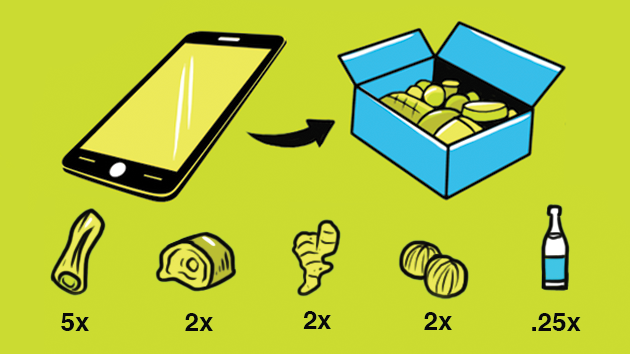
<a href="http://www.istockphoto.com/photo/plate-with-a-question-mark-on-desk-gm506148820-84067689?st=_p_dinner%20plate%20question%20mark">AndreyPopov</a>/iStock
When I dug in to the meal-kit business earlier this year, the math didn’t make much sense to me. For as little as $8.75 per dinner, companies like Blue Apron have workers daintily pack a few sprigs of herbs and pinches of spice in little plastic bags along with a couple of chops or fish filets in boxes cooled with dry ice, to be over-nighted at peak freshness to your door. And they’re apparently not skimping on the groceries—Blue Apron boasts of “specialty ingredients that are fresher than the supermarket” and “meats naturally raised on antibiotic- and hormone-free diets.”
Given the hand labor, the high ingredient/packaging/shipping costs, and the enticing price tag, I concluded that profit margins for such a business model must be razor-thin, and thus that the path to big returns could only come through reaching massive scale. Which means that meal kits, as fresh and revolutionary as they may be, are a destined to be a lot like the rest of the food industry: largely dominated by a handful of massive companies that make big profits selling high volumes of low-priced food.
According to an investigation by Buzzfeed, Blue Apron is like other food businesses in another way (think fast food restaurants or large meat-packing companies): employees are complaining of low pay and tough working conditions. The story focuses on the company’s facility in Richmond, Calif., where, Buzzfeed reports, “14 former employees describe a chaotic, stressful environment where employees work long days for wages starting at $12 an hour bagging cilantro or assembling boxes in a warehouse kept at a temperature below 40 degrees.”
Considering the economics, I can’t say I’m surprised.














